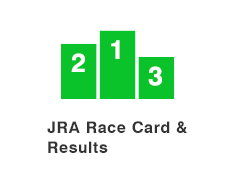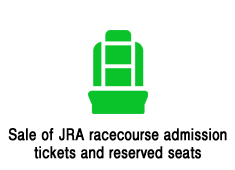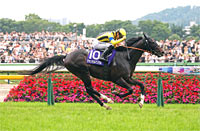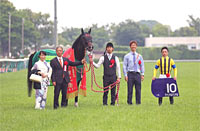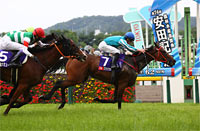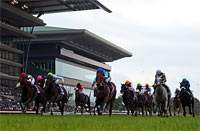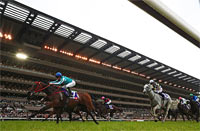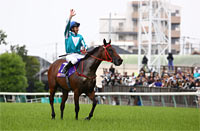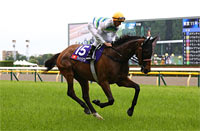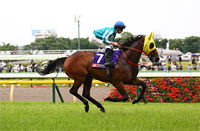Yasuda Kinen (G1) - Data Analysis
Mile champion decider of the spring season brings a clash between the leading active racehorses
The 2024 Yasuda Kinen was won by Hong Kong-trained Romantic Warrior, who had already amassed a total of seven G1 wins in Hong Kong and Australia. In 2025, Romantic Warrior added another G1 title to his record, winning the Jebel Hatta in Dubai. In other words, the Yasuda Kinen is a closely watched race that not only attracts top domestic milers but also formidable overseas competitors. Let’s now analyze some features shared by successful runners in this race based on results over the last 10 years.
Race favorites achieved a Top 3 ratio of 80%
Looking at performances by runners over the last 10 years in terms of favoritism, we find that race favorites achieved an excellent Top 3 ratio of 80.0%. In addition, runners that were backed as 4th favorite or higher accounted for 21 of the 30 Top 3 finishers. This suggests that we can place considerable trust in highly favored runners in this race. [Table 1]
[Table 1] Performance by favoritism (last 10 years)
| Favoritism |
Performance
[1st-2nd-3rd-4th or lower] |
Win ratio |
Top 2 ratio |
Top 3 ratio |
| 1st favorite |
2-3-3-2 |
20.0% |
50.0% |
80.0% |
| 2nd favorite |
0-1-2-7 |
0% |
10.0% |
30.0% |
| 3rd favorite |
1-3-1-5 |
10.0% |
40.0% |
50.0% |
| 4th favorite |
3-1-1-5 |
30.0% |
40.0% |
50.0% |
| 5th favorite |
0-1-0-9 |
0% |
10.0% |
10.0% |
| 6th-10th favorite |
4-1-2-43 |
8.0% |
10.0% |
14.0% |
| 11th favorite or lower |
0-0-1-60 |
0% |
0% |
1.6% |
Focus on runners aged 4 to 6
Looking at performances by runners over the last 10 years in terms of age, we note that 4-year-olds enjoyed the highest Win ratio and Top 2 ratio. Meanwhile, 4-year-olds and 5-year-olds had the edge in terms of the number of Top 3 finishers (10 each), followed by 6-year-olds (seven). While there have been examples of strong performance by 3-year-olds and 7-year-olds, we should focus our attention on runners aged 4 to 6. [Table 2]
[Table 2] Performance by age (last 10 years)
| Age |
Performance
[1st-2nd-3rd-4th or lower] |
Win ratio |
Top 2 ratio |
Top 3 ratio |
| 3 |
0-0-1-3 |
0% |
0% |
25.0% |
| 4 |
5-3-2-30 |
12.5% |
20.0% |
25.0% |
| 5 |
2-5-3-39 |
4.1% |
14.3% |
20.4% |
| 6 |
3-1-3-35 |
7.1% |
9.5% |
16.7% |
| 7 |
0-1-1-16 |
0% |
5.6% |
11.1% |
| 8 |
0-0-0-8 |
0% |
0% |
0% |
Noteworthy performances by mares and fillies, particularly in recent years
Looking at performances by runners over the last 10 years in terms of gender, we observe that mares and fillies have achieved an excellent Top 3 ratio of 42.9%. In addition, if we limit our analysis to the six years since 2019, colts and geldings had performance of only [3-2-5-72] (Top 3 ratio of 12.2%), while mares and fillies delivered performance of [3-4-1-8] (Top 3 ratio of 50.0%). We should therefore assume that mares and fillies are likely to perform well in this race. [Table 3]
[Table 3] Performance by gender (last 10 years)
| Gender |
Performance
[1st-2nd-3rd-4th or lower] |
Win ratio |
Top 2 ratio |
Top 3 ratio |
| Colts and geldings |
7-5-9-119 |
5.0% |
8.6% |
15.0% |
| Mares and fillies |
3-5-1-12 |
14.3% |
38.1% |
42.9% |
Watch runners coming from a G1 race
Looking at performances by runners over the last 10 years in terms of their previous race, we find that 17 of the 30 Top 3 finishers came from a G1/Jpn1 (including overseas G1) race. In addition, if we limit our analysis to the six years since 2019, runners coming from a G1/Jpn1 race delivered performance of [5-6-3-36] (Top 3 ratio of 28.0%), while those coming from another race had performance of [1-0-3-44] (Top 3 ratio of 8.3%), revealing a clear disparity. When comparing the lead-up races of this year’s runners, we should raise our expectations of runners coming from a G1/Jpn1 race. [Table 4]
[Table 4] Performance by previous race (last 10 years)
| Previous race |
Performance
[1st-2nd-3rd-4th or lower] |
Win ratio |
Top 2 ratio |
Top 3 ratio |
| G1/Jpn1 |
5-8-4-53 |
7.1% |
18.6% |
24.3% |
| Other |
5-2-6-78 |
5.5% |
7.7% |
14.3% |
Note: G1 races include overseas G1 races.
Seek out the winner!
Focus on Kanto-trained and foreign-trained horses
All winners over the last five years have either been based at the Miho Training Center or trained overseas. In other words, runners based at the Ritto Training Center have struggled to win in recent years. Another shared feature among the last five winners was that they had contested a G1 race in their previous race. This suggests that we should also take into account the trends above. [Table 5]
[Table 5] Winners’ affiliation and previous race (last five years)
| Year |
Winner |
Affiliation |
Previous race |
| 2020 |
Gran Alegria |
Miho |
Takamatsunomiya Kinen (G1) |
| 2021 |
Danon Kingly |
Miho |
Tenno Sho (Autumn) (G1) |
| 2022 |
Songline |
Miho |
Victoria Mile (G1) |
| 2023 |
Songline |
Miho |
Victoria Mile (G1) |
| 2024 |
Romantic Warrior |
Hong Kong |
Queen Elizabeth II Cup (G1) |
(Masaya Ibuki)
|






